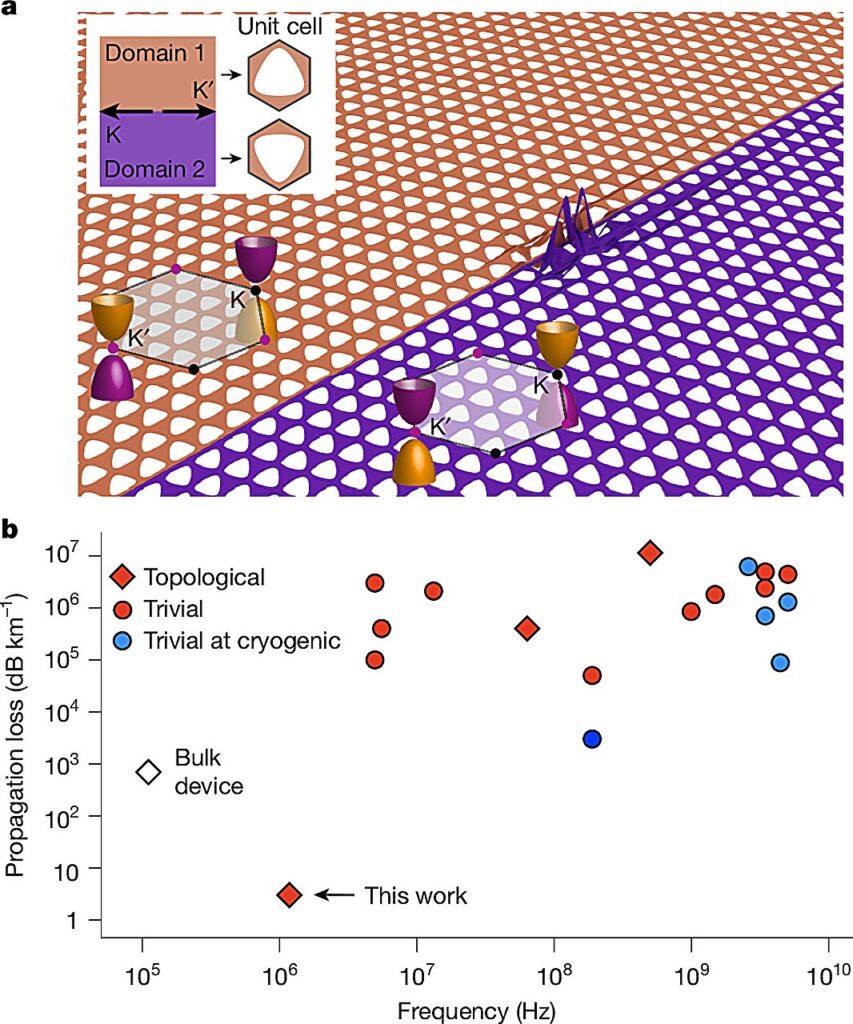The wildest trampoline in the world swings sideways and “around corners.” Yet, no one can jump on it, because it’s not even a millimeter tall. Physicists from the University of Konstanz, the University of Copenhagen, and ETH Zurich designed and constructed it. Why? The aim is to demonstrate improved methods of phonon transport—for example, for use in microchips, where phonons are directed through tight bends. The research is published in the journal Nature.
Imagine a trampoline that is 0.2 millimeters wide with a surface that is barely 20 millionths of a millimeter thick and full of holes. The entire surface contains a pattern of regularly-recurring rounded off triangular holes. Yet, this trampoline is virtually unstoppable and loses almost no momentum. Once set in motion, it would swing on almost forever.
The trampoline is not just limited to swinging up and down. In different regions of its perforated surface, the trampoline simultaneously swings in different directions, even sideways. In the center, there is even a kind of “trampoline within the trampoline.” And, wildest of all, here is where oscillations move “around the corner,” in a perfect triangular pattern.
So why design this trampoline if nobody can jump on it? Of course, this construction was not designed for people to use. The brains behind the trampoline—physicists from the University of Konstanz, the University of Copenhagen, and ETH Zurich—want to use it to demonstrate new methods of phonon transport.

The “trampoline” is actually a waveguide for phonons: a vibrating, ultra-thin membrane made of silicon nitride. Phonons are, so to speak, “sound quanta,” i.e. the elementary excitations on which vibrations of the crystal lattice of a solid are based.
Using the trampoline, the physicists want to demonstrate how phonons can be directed “around corners” by means of a unique surface structure (based on mathematical topology principles) with practically no loss of momentum. This is important, for example, in microchip circuits where signals are to be directed around edges and curves.
The results are impressive: using the trampoline, phonons can even be directed around tight, 120-degree curves with virtually no loss of momentum. The amount of phonons that “bounce back” instead of going around the curve is less than one per ten thousand. “This ultra-low loss is on par with contemporary telecommunication devices,” Konstanz physicist Oded Zilberberg says.
Zilberberg is interested in studying exactly these kinds of topological effects in surface structures and how they can be used in applications. He thinks that, with this method, it could be possible to build entire roads for phonons. Zilberberg created the trampoline’s specific design. His colleagues from the University of Copenhagen and ETH Zurich then put the idea into action.
But, would it be possible to build the trampoline for people to jump on? “I actually have thought about that,” Zilberberg smiles. “It would definitely be a fun experiment. I assume that the principle would also work with a larger scale object.” However, no one should try the “human-sized” version of the trampoline without wearing a helmet.


